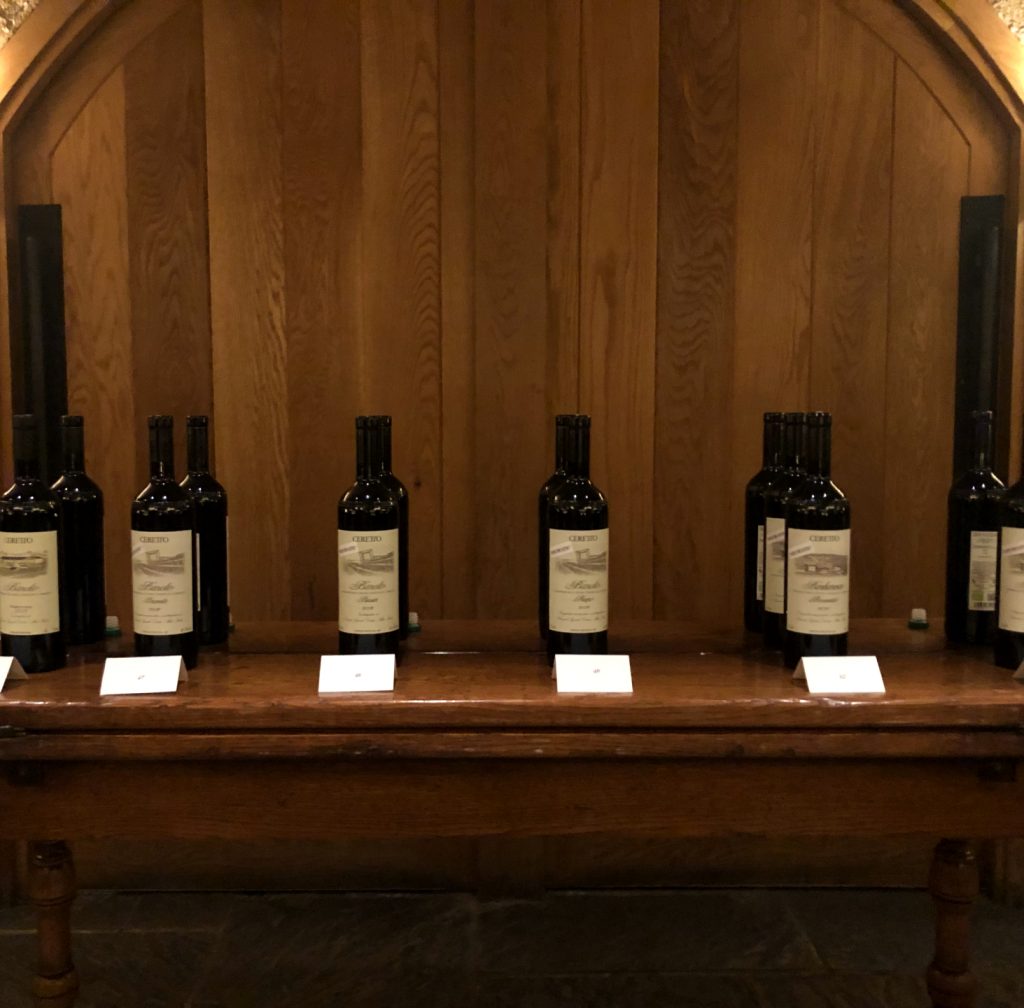Ageing Barolo: your questions answered
Author: Elisa De Luca

Last week saw our release of the 2019 Barolo vintage. We held our annual Piedmont tasting in our cellars at No.3 St. James’s Street last Monday. Joining us were a host of the region’s finest producers, a multitude of delicious wines, and of course – our customers, who had some fascinating questions about the region.
Barolo is, to put it plainly, fascinating. At least, that was the general consensus of the customers who joined us in our Sussex and Napoleon Cellars last week, for a launch of the region’s latest releases.
These Italian wines are fast becoming stalwarts of collections across the globe. Full-bodied, seriously structured and incredibly ageworthy, they are made to be collected and enjoyed over decades to come.
Yet – as was clear during last week’s tasting – Barolo isn’t without its complexities. Many customers had come armed with questions about Nebbiolo, ageing lengths and much more. Luckily, our experts and producers were on hand to help break down the answers. As it turns out, Barolo, once demystified, is even more enjoyable – as evidenced by the smiles on customers’ faces as they left, with questions answered and palates sated.
For those who weren’t able to join us last week, we’ve included our answers to the most commonly asked questions of the evening below.
“How long should you age Barolo for?”
Nebbiolo, the grape from which all Barolo is made, is renowned for being a little abrasive and unfriendly when young. It’s highly tannic and acidic; this is a grape that needs time in the cellar to bring out its full potential. Aged wines will taste softer and smoother – the science of which you can read about here. In summary, though, an aged Barolo will be a lot more pleasant to drink.
The amount of time needed for this development will vary, although 10-20 years is a good starting point for most Barolo wines. Slightly softer styles, from communes like Verduno or La Morra, might need fewer years in the cellar – while the austere examples from Serralunga d’Alba will require more.
Winemaking approaches impact this too: some modern winemaking techniques result in more fruit and perfume in younger wines. So, it’s worth checking what each producer advises in terms of ageing lengths for their wines. By making a note of this, and familiarising yourself with the different Barolo villages, you’ll be able to give yourself a good idea of when your wine will be ready to open and enjoy.
“How can you tell what Barolo will taste like in the future?”
Every year in a vineyard is unique. But, a good way to gauge how a wine will evolve as it ages is to compare it with previous, similar vintages.
Our Italy Buyer, Davy Zyw, cites the 2013 and 1999 vintages as being most similar to 2019. Both great years, these had similarly punchy tannins – although, Davy notes, neither had quite as sharp a focus on terroir as the 2019s do. For anyone wondering what the 2019 will taste like in a few decades’ time, it’s worth finding a bottle of either the 1999 or 2013, and seeing how the wine has developed over the past decade or two. This will be the best way to determine if the 2019 is for you.
“Are these wines worth adding to my cellar?”
As our Buyer Adrian Brice explains in this excellent guide to collecting Barolo, this is a region with a huge amount of untapped potential. Yet, that won’t last – Barolo is fast growing in popularity, and demand growing with it. As we saw with Burgundy some years ago, that will mean a jump in prices, and a decrease in availability.
Barolo still does have some hidden treasures up its sleeve, so now is a wonderful time to add bottles to your cellar. The 2019 is a fantastic place to start; powerful and immensely ageworthy, these are wines that will demonstrate the exceptional potential of the region, and are sure to convert scores of collectors into true Nebbiolo enthusiasts. Just make sure to give them the time they deserve.
Browse our full Barolo 2019 release here, or discover more about our upcoming tastings here.


